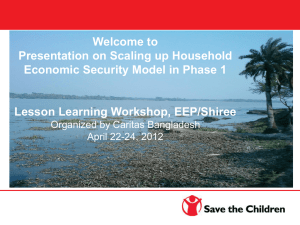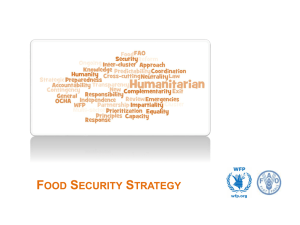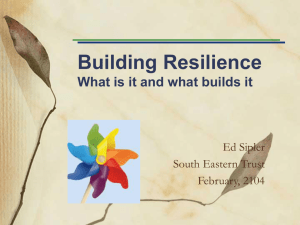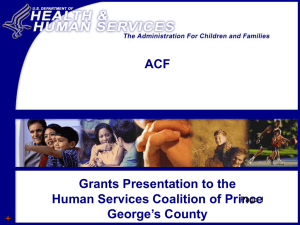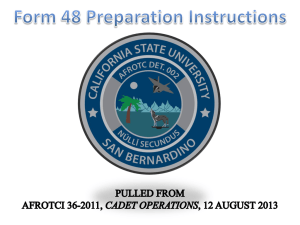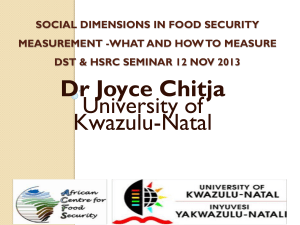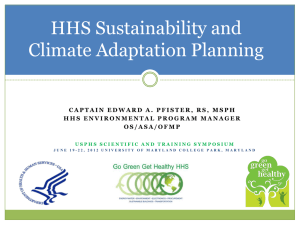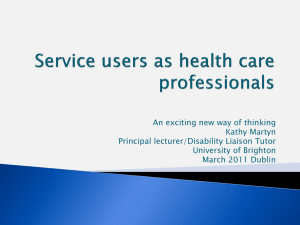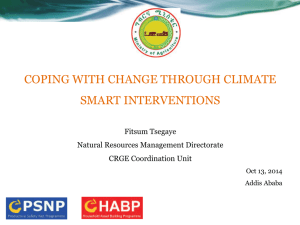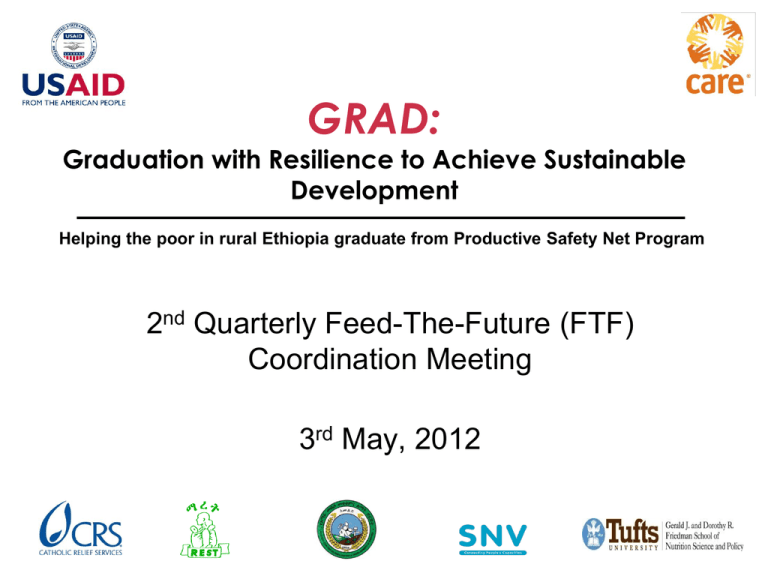
GRAD:
Graduation with Resilience to Achieve Sustainable
Development
Helping the poor in rural Ethiopia graduate from Productive Safety Net Program
2nd Quarterly Feed-The-Future (FTF)
Coordination Meeting
3rd May, 2012
Goal and Objectives
GOAL
* Assets increased,
* HH income raised
by $365/yr.
* Resiliency enhanced
Work with 65K PSNP
HHs & 10K Model
Farmers
Enhance
Livelihood
Options for CFI
Households in
Highland Areas
1. On- and off-farm economic
opportunities, inclusive value chains
and market access stimulated
2. An inclusive financial sector
promoted and access to a range of
financial products and services
expanded
3. Extension services upgraded
Objectives/
Results
Improve Household
and Community
Resilience
1. Women’s resilience and access to
inputs, services and information
increased
2. Nutritional status of infants, children
and reproductive age women
improved
3. Climate change adaptation improved
4. Aspirations for graduation promoted,
and enablers of graduation
enhanced
* Graduate 50K
PSNP HHs
* Develop
Pathways for
Graduation
Strengthen
Enabling
Environment to
Promote Scale
and Sustainability
1. Collaboration among
stakeholders consolidated
to promote joint learning
and scale up
2. Enabling environment
improved
3. Evaluation, learning and
sharing
Result 1: Enhance Livelihood Options
1.1. On and Off farm economic opportunities, inclusive
value chains and market Access for Target HHs
Stimulated
• Identify on- and off- farm economic opportunities
• Establish production and marketing associations (PMAs)
• Strengthen technical, business and organizational skills
of PMAs and HHs
• Facilitate access to agricultural inputs, technology and
services
• Build output markets and develop business relationships
Result 1: Enhance Livelihood Options
1.2 Promote inclusive financial sector and
expand access to a range of financial
products and services
• Facilitate coordination among key financial actors
• Link financial service providers and PMAs:
• Increase service provision to GRAD HHs
• Increase access to financial services to other value chain
actors
Result 1: Enhance Livelihood Options
1.3 Extension services upgraded
• Build technical, business and facilitation skills
into extension curriculum
• Provide training, coaching and mentoring to DAs
• Improve/ build linkages between DAs and
market based service providers
Result 2: Improved Household and
Community Resilience
2.1. Increase women’s resilience and access to inputs,
services and information
• Gender focal persons and staff from sector offices
champion gender mainstreaming:
– Provide gender mainstreaming training
– Mentoring and support for gender focal persons
– Ensure collection of sex disaggregated data for all sectors
• Enhance gender equity for women, particularly
related to HH tasks and decision making
– Develop strategy to engage men and boys
– Identify and train male role models/positive deviants to become
social agents
Result 2: Improved Household and
Community Resilience
2.2. Improve nutritional status of infants, children and
reproductive age women
• Promote appropriate feeding practices
– Conduct behavioral barrier analysis
– Include BCC on nutrition in the training modules of
PMAs
– Use community peer educators, mother support
groups
– Engage fathers to reduce burden on mothers and
girls
– Link with the HEWs
Result 2: Improved Household and Community
Resilience
2.2. Improve nutritional status of infants,
children and reproductive age women
• Cultivation, use and storage of high nutrient foods
– Identify and support IGA opportunities for women that
contribute for improved nutrition,
– Demonstrate the nutritional up take through improved
production and utilization at FTC,
– Education on utilization, safe storage and processing
of nutrient rich VC commodities (dairy, pulses and
meat)
– Train Development agents and model women on the
cultivation, use and storage of high nutrient food
Result 2: Improved Household and
Community Resilience
2.3. Climate change (CC) adaptation
• Targeted HHs and stakeholders understand CC implication
– Adapt methodology for analyzing vulnerability and capacity to
adapt to climate change at community level
– Facilitate for community to apply the methodology
• Promote adaptation strategies to mitigate CC effects
– Support adaptation strategies by designing VCs and other
interventions to build resiliency of HHs
• Identify and support vulnerable groups (particularly women)
– Conduct analysis to determine how HHs/individuals affected by
external factors in using resources & identify most vulnerable
aspects of livelihoods
– Support vulnerable groups to develop adaptation strategies
Result 2: Improved Household and
Community Resilience
2.4. Promote aspiration for graduation among HH and
enhance enablers of graduation
• Enhance understanding of HHs and stakeholders on
graduation process
– Prepare communication materials on graduation
– Organize orientation sessions
– Include graduation information in other workshops
• Promote proven graduation practices and enablers
– Identify and share good practices/lessons from those graduated
– Recognize HH making significant progress towards graduation
• Engage community in fact based food security monitoring
– Develop simple monitoring formats to be used by PMAs to track
progress of GRAD HHs
Result 3: Strengthened Enabling Environment
to Promote Scale and Sustainability
3.1. Collaboration among stakeholders
consolidated
• Establish joint platform between HABP, GRAD and
other stakeholders
– Discuss best practices, emerging impacts and lessons
• Joint learning agenda to facilitate action research
developed
• Lessons and research outcomes shared/used for
national impact.
Result 3: Strengthened Enabling Environment
to Promote Scale and Sustainability
3.2. Enabling Environment improved
• Operational issues and bottlenecks with potential to
accelerate graduation and resilience of PSNP HHs
identified
• Test and document through operational research
• Collaborate with other similar programs to maximize
synergies
Targeted value chains by woreda
Region
Woredas
Livestock fattening
Honey
Ofla
Tigray
Alamata
Enda Mohoni
Raya Azebo
Amhara
Libo Kemkem
Lay Gayint
Arsi Negele
Oromia
Zeway Dugda
Shalla
Adami Tulu
Hawassa Zuria
Loka Abaya
SNNPR
Shebedino
Hawila Tula
Meskan
Mareko
`
Malt Barley
Pulses
Vegetables
Target Groups and Stakeholders
Capacity building and studies
• Value Chain Development training
• Capacity building to financial service providers on
– reaching the poorest and
– development of a sustainable service delivery model
• Capacity assessment/ strengthening of the extension
system
• Value chain analysis including gender analysis
• Economic mapping and IGA identification
• Behavioral barrier analysis on feeding practices
Implementation approach/methodology
Assumption: There is a pathway for graduation: A
particular combination and sequencing of interventions
leads to graduation.
•
•
•
•
•
•
•
•
•
Push – pull approach
Organize HHs into producer marketing groups
Use role models and peer educators
Build partnership with private and financial sector
Engage MOA in transformation of extension service
Build synergy with HABP, FtF projects (ENGINE, AGP,LGP…
Gender Primacy
Social Accountability
Building local capacity by working through local partners &
HABP
Thank you


